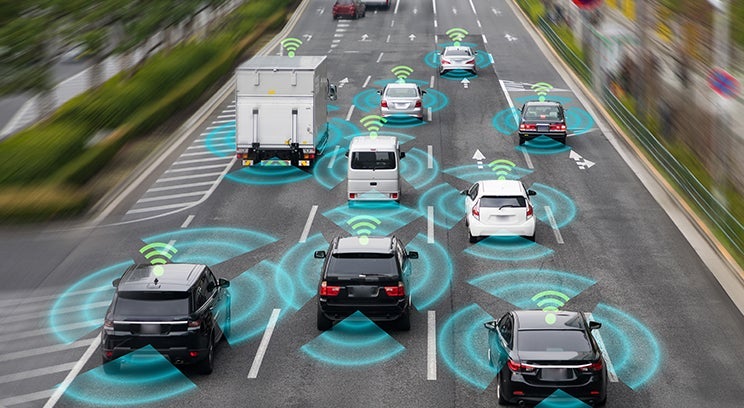
The automotive landscape is undergoing a profound transformation driven by remarkable Car Machine Innovations. These advancements are not merely incremental improvements; they signify a paradigm shift in how vehicles are designed, manufactured, and operated. This article delves into some of the most significant innovations reshaping the road ahead, presenting an exciting glimpse into the future of transportation.
The Rise of Autonomous Vehicles
One of the most groundbreaking advancements in automotive technology is the emergence of autonomous vehicles. These self-driving cars utilize a sophisticated amalgamation of sensors, cameras, and artificial intelligence algorithms to navigate their surroundings with unparalleled precision. The implications of this technology extend far beyond mere convenience; they promise to enhance road safety by significantly reducing human error, a leading cause of traffic accidents.
As these vehicles proliferate, the potential for urban planning and traffic management evolves. Smart infrastructure, equipped with real-time data analytics, can communicate with autonomous cars to optimize traffic flow, minimize congestion, and reduce emissions. The convergence of these technologies heralds a future where commuting becomes less of a chore and more of a seamless experience.
Electrification: The Shift Towards Sustainable Mobility
Another critical aspect of Car Machine Innovations is the rapid shift towards electrification. Electric vehicles (EVs) have surged in popularity, driven by a global imperative to reduce carbon footprints and reliance on fossil fuels. Manufacturers are investing heavily in research and development to enhance battery technology, improve range, and accelerate charging times.
This electrification trend extends beyond passenger vehicles to commercial fleets and public transport systems. The advent of electric buses and delivery vans is reshaping urban landscapes, fostering cleaner air and quieter streets. Furthermore, innovations in charging infrastructure, such as ultra-fast chargers and wireless charging systems, are making electric mobility more accessible and practical for everyday consumers.
Connected Car Technologies
The advent of connected car technologies is another facet of the automotive revolution. Vehicles are becoming integral components of a broader digital ecosystem, allowing for seamless communication between cars, infrastructure, and even pedestrians. This connectivity enhances the driving experience by providing real-time data on traffic conditions, weather, and road hazards.
Moreover, connected cars can leverage over-the-air (OTA) updates, allowing manufacturers to refine software and enhance features long after the initial sale. This capability not only prolongs the lifespan of the vehicle but also ensures that drivers benefit from the latest advancements without needing to visit a dealership. The implications for vehicle safety and performance are profound, as manufacturers can respond rapidly to emerging issues and improve systems dynamically.
Advanced Driver Assistance Systems (ADAS)
As Car Machine Innovations continue to evolve, Advanced Driver Assistance Systems (ADAS) play a crucial role in enhancing safety and comfort. These systems incorporate a range of technologies designed to assist drivers in their daily commutes. Features such as adaptive cruise control, lane-keeping assist, and automatic emergency braking are now commonplace, significantly mitigating the risks associated with distracted or fatigued driving.
ADAS not only promotes safer driving practices but also prepares consumers for the eventual transition to fully autonomous vehicles. By familiarizing drivers with these technologies, manufacturers are fostering a culture of acceptance and understanding regarding the capabilities and limitations of automation.
The Impact of 3D Printing
The automotive industry is also witnessing a revolution in manufacturing processes, particularly through the integration of 3D printing. This innovative technique allows for the rapid prototyping and production of complex components, thereby streamlining the development process. Manufacturers can create lightweight, customized parts with reduced waste, addressing both cost and sustainability concerns.
3D printing also facilitates the production of spare parts on demand, reducing the need for extensive inventory and expediting repairs. This capability is especially beneficial for classic car enthusiasts, enabling the reproduction of rare components that might otherwise be unattainable.
In conclusion, the convergence of these Car Machine Innovations signifies a remarkable shift in the automotive sector. As autonomous vehicles, electrification, connected technologies, ADAS, and advanced manufacturing processes continue to advance, the future of transportation is poised for transformation. These innovations not only promise to enhance safety and efficiency but also contribute to a more sustainable and connected world.
As consumers and industry stakeholders alike embrace these advancements, the road ahead is one filled with excitement and potential. The automotive industry is not merely adapting to change; it is leading the way into a new era of mobility that redefines our relationship with transportation. The journey has only just begun, and the possibilities are as vast as the open road itself.


.jpg?k=1924235ce9)
